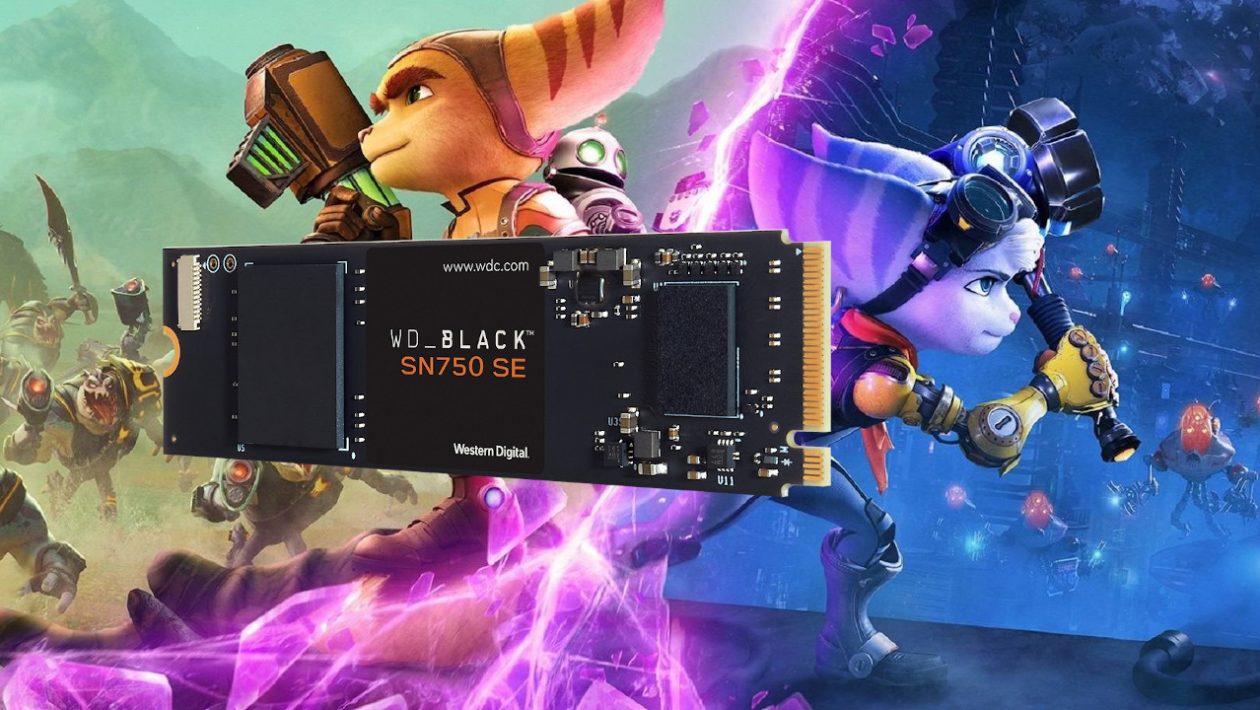Even with slower external SSDs, the PS5 doesn’t lose much Vortex speed
The latest update to the PlayStation 5 firmware has brought, in addition to several cosmetic changes, the desired option to expand the internal storage with additional SSDs. The welcome new feature allows you to expand the capacity of the disc so that it is possible to install more games designed natively for the PS5 directly into the console. Of course, this has its specifics and it is not possible to reach for just any disc. In addition to physical size limitations, for example, Sony specifies on its website that it should be a PCI-Express Gen4x4 supporting M.2 NVMe SSD and states at least 5500 MB / s as the recommended speed. However, the first tests show that it is possible to use even slower disks, which has recently been taken care of, for example, by representatives of the technology-oriented Digital Foundry website.
They managed to prove that it is possible to expand the internal storage even with a relatively tight budget. You can see the result of the experiment in the video below, the main content of which is an experiment with a SN750 SE disc from Western Digital. It is one of the cheapest discs to be compatible with the PS5 based on the above criteria, but experiments have revealed that it will pass even one of the most challenging game tests on this console: the Ratchet & Clank: Rift Apart action adventure. It relies significantly on fast data retrieval when moving through portals. And that’s not exactly what the memory illustrates when the Insomniac Games development team has previously put players on their minds to be careful when choosing an SSD and to follow Sony’s recommendations.
In light of these recommendations, the result of the attempt looks all the more surprising, as a disk with a paper speed of “only” 3600 MB per second when read is rich enough for the challenging action adventure tested. At the same time, Insomniac Games relied on the fact that their innovation could not be extended to the previous generation of the PlayStation console, and a fast SSD is a must. Probably not so fast, and of course a good optimization can be highlighted for that account. In this context, Kotaku’s website aptly notes that at the beginning of the life cycle, developers have probably only bit into the potential of the console, and it is a question of what they can squeeze out of disks with almost twice the recommended minimum read speed.
Other tests also look interesting – the Digital Foundry website, for example, refers to attempts to load games, which sometimes even turned out better than the basic internal SSD, which is a topic that was then commented on quite vividly. Digital Foundry Weekly said that games like Control and Devil May Cry 5 V Special Edition saw an increase in framerate of around 3-5 percent, a remarkable phenomenon and a promise for the future. However, the problem quite understandably occurs when moving data. The disk tested here is not enough and, for example, copying a 100 GB large Cyberpunk 2077 from internal storage to an installed SSD took almost ten minutes, while on a faster SSD (Western Digital SN850) it was almost ten times less. This can also be affected by the fact that this type of disk does not contain a buffer and relies only on the internal RAM console. This, along with the need to have a heatsink installed, is also one of the things Sony recommends to watch out when choosing a disc. An illustrative excerpt of data is attached in the table below, for its full version you can visit the website of the British Eurogamer.
In conclusion, this can be an important question for many gamers – why does Sony actually want such a powerful (and expensive) SSD, when it can basically be used even significantly slower? The answer is obviously cover your back and insurance for the maximum possible potential, especially in the future and for titles that will only place high demands on the console’s performance. The tested Ratchet & Clank: Rift Apart is prone to speed fluctuations, but experiments have shown that there is no significant difference between the slower and faster disk, at least for now. However, we will inform you in more detail about this, as we are going to test various disks in the console ourselves, but if you would like to shop now, we can recall the recommendation of console architect Mark Cerny, who reached for a higher range of disks from Western Digital.


